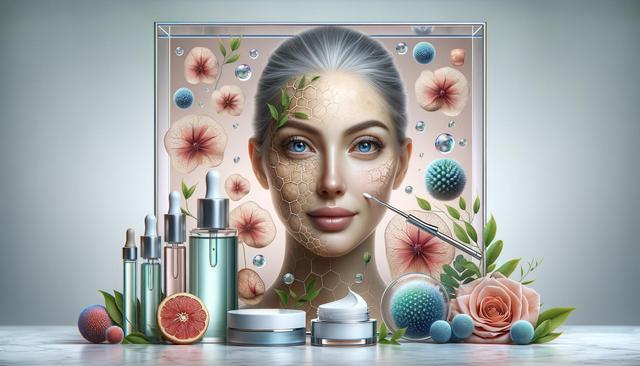Understanding the Causes of Wrinkles
Wrinkles are a natural part of the aging process, often resulting from a combination of factors such as reduced collagen production, repetitive facial expressions, and environmental influences like sun exposure and pollution. As the skin ages, it loses elasticity and moisture, leading to the appearance of fine lines and deeper creases. While genetics play a significant role in how and when wrinkles develop, lifestyle choices also contribute. Smoking, poor nutrition, and inadequate skin care can accelerate the aging process. Understanding these causes is essential in selecting the appropriate non-surgical wrinkle treatment options tailored to individual skin needs.
In addition to intrinsic aging, extrinsic aging caused by external elements can be managed more proactively. Preventive measures such as regular use of sunscreen, proper hydration, and a balanced diet rich in antioxidants are foundational strategies. These practices help maintain the skin’s health and delay the onset of visible signs of aging. Recognizing the early signs and addressing them through consistent care can reduce the reliance on more intensive procedures later.
Topical Treatments and Skincare Products
Topical treatments remain one of the most accessible non-invasive methods for addressing wrinkles. These include over-the-counter and prescription creams containing active ingredients that support skin renewal and hydration. Commonly used ingredients in these formulations include:
- Retinoids (vitamin A derivatives) – promote cell turnover and collagen production
- Peptides – support skin structure and repair
- Hyaluronic acid – provides deep hydration and plumps the skin’s surface
- Antioxidants such as vitamin C – protect against environmental damage
These products are often used as part of a daily skincare routine and can produce gradual improvements over time. Consistency is key, as visible results typically develop over several weeks or months. In combination with good sun protection and regular cleansing, topical treatments can play a central role in wrinkle prevention and reduction.
Some individuals may prefer customized skincare regimens developed with the guidance of a dermatologist or licensed skincare professional. These personalized treatments can address specific skin concerns and include higher-strength formulations that are not available over the counter. Regular follow-ups help track progress and adjust the regimen as needed for optimal outcomes.
Injectables and Dermal Fillers
For those seeking more immediate results without surgery, injectables and dermal fillers are widely used in modern wrinkle treatment. These procedures are typically performed in clinical settings by trained professionals and involve minimal downtime. There are two primary categories:
- Neuromodulators – temporarily relax facial muscles to reduce the appearance of dynamic wrinkles, especially in areas such as the forehead and around the eyes
- Dermal fillers – restore lost volume and smooth out fine lines by injecting substances like hyaluronic acid into targeted areas
Injectables are popular due to their relatively quick procedure time and noticeable results. While the effects are not permanent, they can last from several months up to a year depending on the product and individual response. Regular maintenance sessions are recommended to sustain the desired appearance. It is also important to have treatments administered by qualified professionals to ensure safety and effectiveness.
These options are often used in combination with other skincare approaches for a comprehensive plan. For instance, someone might use topical retinoids to improve skin texture and opt for fillers to address deeper creases. This multi-faceted approach supports both immediate and long-term wrinkle management.
Non-Invasive Device-Based Therapies
Another category of non-surgical wrinkle treatments includes device-based therapies that use various forms of energy to stimulate collagen production and improve skin texture. These procedures are performed in clinics or dermatology offices, often requiring a series of sessions for optimal results. Some of the most commonly discussed methods include:
- Laser therapy – targets specific layers of skin to promote regeneration and tighten the underlying structure
- Radiofrequency (RF) treatments – deliver heat to stimulate collagen and elastin production
- Micro-focused ultrasound – penetrates deep into the skin to create a lifting effect over time
These treatments are generally well-tolerated and require little to no downtime, making them attractive to individuals who prefer low-disruption options. While outcomes vary depending on skin type and condition, many users report smoother, firmer skin after completing a treatment series. Maintenance sessions may be recommended to prolong the effects.
As technology continues to advance, newer devices offer more targeted and efficient results with increased comfort. It is important for individuals to consult with experienced providers who can assess skin needs and recommend the most appropriate therapy based on clinical evaluation.
Lifestyle Choices and Preventive Measures
While treatments can address existing wrinkles, lifestyle choices play a critical role in preventing premature aging. Integrating healthy habits into daily routines supports skin health and complements other wrinkle treatment methods. Some key preventive strategies include:
- Using broad-spectrum sunscreen daily to protect against UV damage
- Staying hydrated and consuming a balanced diet rich in vitamins and antioxidants
- Avoiding smoking and limiting alcohol consumption
- Establishing a consistent skincare routine with gentle cleansing and moisturizing
Stress management and quality sleep also contribute to overall skin wellness. Chronic stress can deplete essential skin nutrients and disrupt repair processes, while restful sleep allows time for regeneration. Mindful practices such as meditation or regular physical activity can have a positive impact on skin appearance over time.
Preventive care requires ongoing effort, but it can significantly delay the onset of visible aging signs. When combined with targeted wrinkle treatments, a proactive lifestyle forms the foundation of long-term skin health and resilience.
Conclusion: Choosing the Right Approach for You
Non-surgical wrinkle treatment options have expanded significantly, offering a wide range of choices to suit different skin types, preferences, and goals. From topical products and injectables to advanced device-based therapies, each method can contribute to a more youthful and refreshed appearance when used appropriately. It is crucial for individuals to assess their specific skin concerns, consult with qualified professionals, and consider both short-term needs and long-term maintenance. By combining effective treatments with thoughtful lifestyle adjustments, it is possible to support healthy skin aging and enhance overall skin vitality.




Leave a Reply